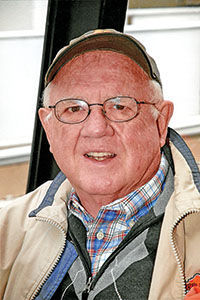Most hoof-care professionals see the need to give back to an industry that has treated them well during their careers. But at the same time, some farriers have shared with us how difficult it can be to pick and choose where they want to volunteer their services. And it can be even more difficult when you’re already volunteering your services to several groups and having to say “no” to other well-meaning groups with a valid need for your help.
Many farriers have been extremely generous in volunteering their time and services to groups over the years. Good examples are found with previous winners of the American Farriers Journal sponsored Summit Achievement Award that has recognized outstanding volunteer donations in the footcare area.
As an example of one of the winners, Margie Lee-Gustafson of Palo Alto, Calif., has worked for a number of years on up to a dozen horses every 6 weeks for the National Center for Equine Facilitated Therapy in Woodside, Calif. It’s estimated that this volunteer work translated into a savings of $280,000 to the group over a period of 14 years.
Have A Strategy In Place
The key, say many farriers, is to think through in advance these kinds of situations and try to come up with a plan before one or more equine groups in your area asks you to volunteer your services.
Some farriers donate their time and services to equine groups. Others may donate their time, but ask the organizations to pay for shoes and other needed footcare supplies. Other farriers simply offer a discount on the footcare work for needy groups.
While Matt Cooper from time to time helps several groups with needed footcare work at no or little cost, he says working with some groups can be a major concern.
“Rescuing horses is a big deal here in south Texas and many of these operators are always seeking sponsors,” says the farrier from Cleveland, Texas. “At the same time, some of the folks running such groups may end up selling the horses for a profit.”
He says the intentions of many of these folks at these groups are good, but they often don’t have the dollars to do a good job. As a result, the horses suffer.
“There are definitely horses that need our help and we give back when we can,” he says. “For instance, I work with a local rescue group and find most of the donated horses need some footcare work in order to become sound so kids can ride them.”
(For more on how Cooper runs his highly efficient and diversified hoof-care business, check out the March 2014 issue of America Farriers Journal. He is featured in that issue’s “Shoeing For A Living” article.)
How About You?
What kind of plan do you have for volunteering or donating your time and services to therapeutic riding groups or equine rescue operations? How do you decide what groups you can help out with footcare needs? And what kind of strategy do you have in place for deciding where to volunteer your services?
I’d like to hear your ideas, so please let me know how you handle these situations by posting your thoughts and ideas on volunteering your time and services below.







